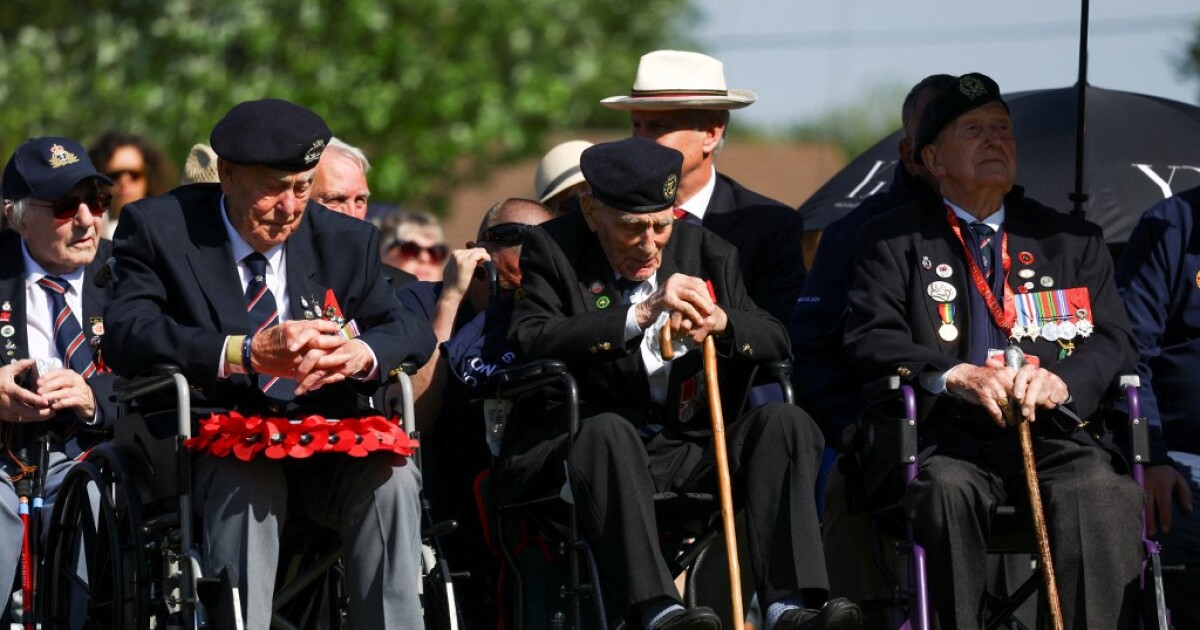
D-Day, known in military history as June 6, 1944, marked the beginning of the Operation Overlord, the Allied invasion of Nazi-occupied Europe during World War II.
Eight decades ago many men were preparing for the largest amphibious operation of all time. This June 5, several veterans smilingly disembarked on a ferry to attend the ceremonies of their deed on June 6, 1944.
“I’m not particularly proud of what I did, but if I had to do it again, I would. I’m happy with our sacrifice so that others could have a good life.”99-year-old D-Day veteran John Mines told AFP.
The man was 19 years old when he landed in the first wave, among the engineers in charge of clearing Gold Beach of obstacles, on the shores of the Norman town of Ver-sur-Mer.
John Mines’ first mission was to clear a beach of mines. “In fact, they chose me because of my last name.”
“I was very lucky. A projectile exploded a meter away from me and if a machine gun hit you, it would cut you in two. One of my companions died immediately after setting foot on the beach”concludes the veteran.
Carlos III gave emotional speech for D-Day
King Charles III, who continues his treatment for cancer, gave an emotional speech in Portsmouth, southern England. The 75-year-old monarch attended the commemoration of the 80th anniversary of D-Day with his wife Camila.
“As we thank those who gave so much to achieve the victory we enjoy today, let us recommit ourselves to remembering and honoring them,” the king said to a crowd waving thousands of small British flags.
“Eight decades later, it is almost impossible to imagine the emotions felt that day, the pride of being part of such a great mission, the anguish of not being up to the task and the fear that that day would be the last,” he added.
What is D-Day?
D-Day is not only remembered for its massive scale and strategic significance, but also for the courage and sacrifice of those who participated in it.
Planning for D-Day was a monumental effort that involved months of meticulous preparation. The Allies, under the command of General Dwight D. Eisenhower, designed an operation involving ground, naval and air forces. The goal was to establish a beachhead in Normandy, France, to open a new front against Axis forces in Western Europe.
The operation began at dawn with the landing of gliders and paratroopers behind enemy lines to secure bridges and strategic points. As dawn broke, thousands of ships approached the shores of Normandy, landing troops on five coded beaches: Utah, Omaha, Gold, Juno and Sword.
D-Day was full of challenges, from difficult weather conditions that nearly delayed the operation, to fierce German resistance at key points such as Omaha Beach. Despite the obstacles, the Allies managed to establish firm positions on the French coast, although at a high cost in human lives.
The operation was also notable for its use of technologies and innovations, such as Duplex Drive amphibious tanks and Mulberry ports, temporary structures that allowed for the rapid disembarkation of supplies and reinforcements.
Encryption and deception also played a crucial role, with the Allies using disinformation tactics to confuse the Germans about the location and timing of the attack.
The success of D-Day was a turning point in the war. It allowed the Allies to gain a foothold in Europe and begin the slow, arduous task of liberating the continent from Nazi rule. In the following months, Allied forces advanced towards Paris and beyond, culminating in Germany’s surrender in May 1945.
Source: https://www.noticiascaracol.com/mundo/veteranos-recuerdan-dia-d-en-el-80-aniversario-un-proyectil-exploto-a-un-metro-de-mi-cb20


